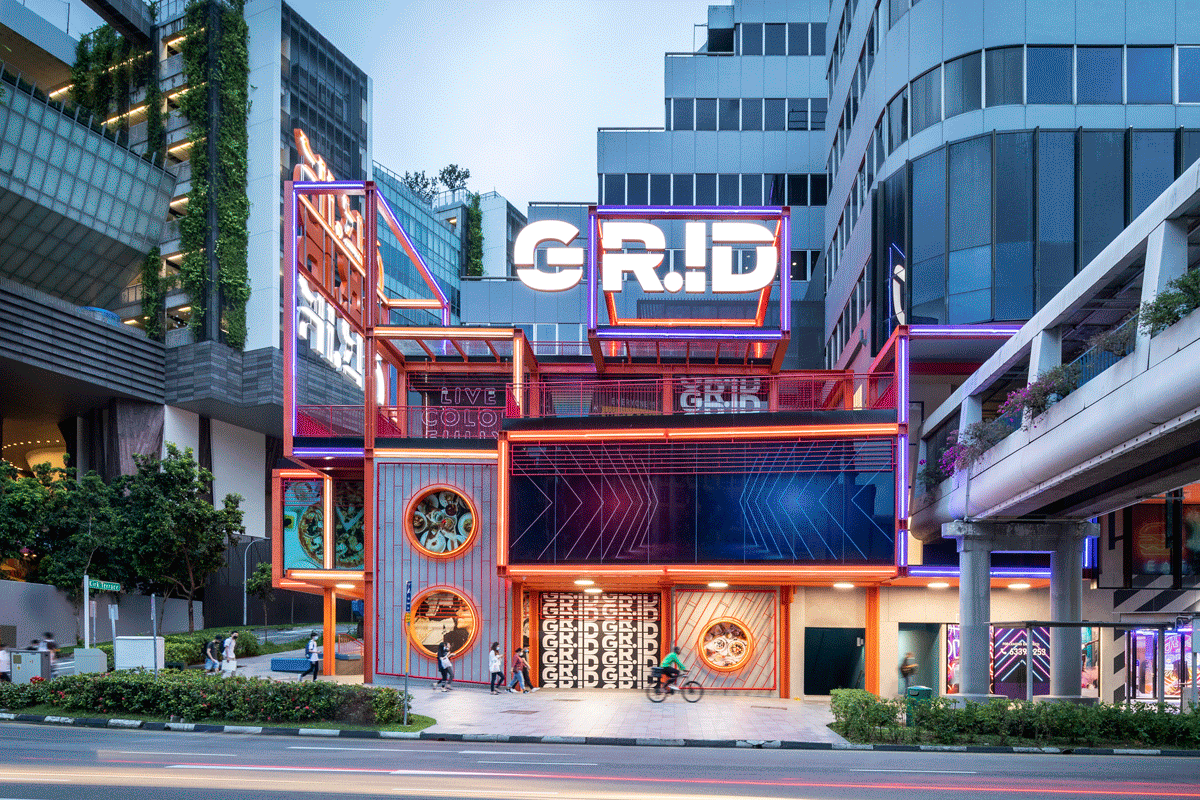THE FIRST LOOK AT GR.ID, A “RETRO-FIRST” PROJECT
SPARK has built a reputation on the innovative transformation of buildings and has won many awards for its work including the transformation of Clarke Quay in Singapore and Starhill Gallery in Kuala Lumpur.
“It is all too easy to reach the “convenient” conclusion to demolish but putting reuse and transformation at the heart of what we do might take more time, creativity and effort but knocking down our urban heritage, in all its forms, is simply unsustainable. We need to extend the life of existing buildings wherever possible. Retrofitting provides an opportunity to achieve significant embodied carbon savings through reuse rather than rebuild’ – Stephen Pimbley, SPARK Founder and Partner.
Before and after
GR.iD which sits at the heart of Singapore’s Arts District sandwiched between the relatively new SOTA and Singapore’s older generation of time worn shopping malls Park Lane and Peace Centre is a great example of an energy-efficient and sensitive transformation of an existing building into a youth and education focussed hub for the district.
Completed Façade of GR.iD by photographer Fabian Ong
SPARK has transformed the existing POMO mall into a youth focussed development “GR.iD” that embraces the eclectic and vibrant atmosphere and culture of the Selegie education district of Singapore. The mall podium has been radically reinvented to capture the potential value of street facing shops and relationship to the School of the Arts. The new “Tetris” arrangement of stacked retail and F+B volumes and terraces provides a new image and address for the development whilst maximising the potential “image” of the project’s key corner.
Social stair,by photographer Fabian Ong
New entrance, by photographer Fabian Ong
The “Tetris” fragments to encourage direct links to basement leisure and food outlets via a 5m wide triple height social staircase. Key transforming installations include new washrooms, new social “hang out” spaces, activated voids and new entrances.
RETROFIRST
SPARK operates across disciplines and scales to make sense of the forces that shape our cities. We work with developers and communities to provide greater agency and transformative potential of existing buildings without resorting to costly and environmentally damaging wholesale demolition and rebuilding.
We provide a platform for design, research, curation, consultation and transformative realisation, that provokes a wider conversation about the city and its existing building stock. This is critical when the subject of reuse of existing buildings is so apposite to the wider issues of social and environmental sustainability.
Developers need to look more positively at older buildings to boost the quantum of retrofit and refurbishment projects and the transformation of Singapore’s current building stock to reduce the heavy carbon emissions associated with new build projects.
Retro-fit projects like GR.iD demonstrates what should be the norm rather than the exception in Singapore.





